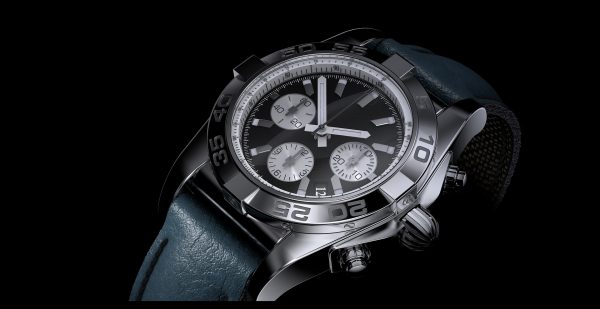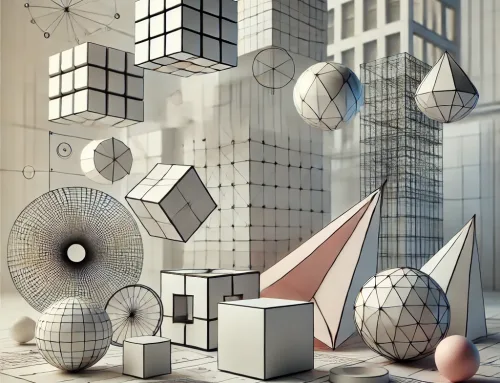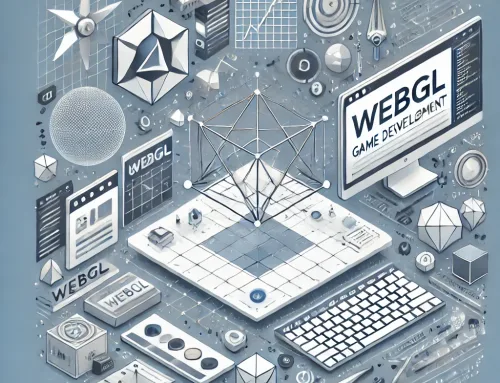Wie Sie durch 3D Customization die Kundenzufriedenheit verbessern.
Die Produktions- und Vertriebsprozesse bei den meisten Produkten ähneln sich stark. Ein kleines Team entwickelt ein Produkt und sobald es produziert wurde, vermarkten es andere und verkaufen es an verschiedene Kunden. Ein Unternehmen kann Fokusgruppen, Forschung, internes Feedback oder Kundenvorschläge nutzen, um einen neuen Produktentwicklungspfad einzuschlagen.
Doch während des Produktentwicklungsprozesses und nach der Produkteinführung werden Feedback und Ideen oft nicht eingeholt. Im Anschluss kann eine Marktforschung durchgeführt werden, um die Positionierung oder den relativen Erfolg eines Produkts zu bestimmen. Anschließend macht sich das Produktentwicklungsteam wieder auf den Weg, um etwas Neues zu entwerfen oder die alten Ideen zu verbessern.
Es gibt jedoch eine weitaus agilere, reaktionsschnellere und proaktivere Art und Weise, Produkte zu entwickeln. Durch die Nutzung der Möglichkeiten der 3D Customization in Verbindung mit der digitalen Fertigung können Unternehmen Produkte entwerfen, die besser zu ihren Kunden passen. Unternehmen können ihre Kunden aktiver in einen kontinuierlichen Dialog einbinden. Dies ermöglicht es den Kunden, eine Stimme im Design eines Produkts zu haben und trägt dazu bei, dieses Produkt besser zu machen.

Mass Customization und Kundeninteraktion.
In der Mass Customization kann ein Kunde das Produkt entwerfen, das er haben möchte. Mit Hilfe von Online-Software-Tools wie Sie beispielsweise von Twikit entwickelt werden, können Menschen online mit einem Design spielen und interagieren. Sie können eine Sache so dimensionieren, dass Sie zu Gesicht, Füßen oder Händen passt. Sie können Daten wie Geburtstage eingeben. Darauf aufbauend kann der Kunde dann sein eigenes Produkt entwerfen. Anstatt den Menschen eine bestimmte Menge von Produkten zur Verfügung zu stellen, bietet die Mass Customization den Kunden viele Optionen und Freiheiten auf kreative Weise die Produkte auf die eigenen Bedürfnisse anzupassen. Durch sofortige Änderungen, die der Kunde in seinem Browser visualisiert, kann der Kunde sehen, wie er den Designprozess beeinflusst. Nachdem das gewünschte Design realisiert wurde, kann der Nutzer die Bestellung aufgeben. Dies ist eine ganz andere Methode des Verkaufs an einen Kunden. Anstatt einer Option, existieren sehr viele. Das Bieten einer großen Auswahl ohne dabei den Kunden mit zu vielen Entscheidungen zu überfordern, ist das Schlüsselelement für die Gestaltung von Online-Benutzererfahrungen, die in der Mass Customization funktionieren.
Spielerisch die Kundenbindung erhöhen.
Sobald diese Balance in die Realität umgesetzt wurde, können die Kunden eine neue Art von Einkauf erleben. Durch die direkte Interaktion mit dem Produkt wird dem Kunden viel Spaß vermittelt. Einkaufen ist jetzt ein spielerischer Prozess, bei dem Menschen ihre Phantasie einsetzen können, um eine Sache perfekter für Sie zu machen. Sie können Buchstaben und Phrasen hinzufügen, Designänderungen vornehmen und sehen, wie die Ergebnisse vor ihnen erscheinen. Buchstaben können erstellt und gelöscht werden, Formen können verändert werden. Der Spaßfaktor lässt die Menschen das Ergebnis genießen. Sie stellen sich auch immer wieder vor, wie sich dieses Produkt anfühlen würde oder welchen Nutzen es für Sie hätte, es zu besitzen oder es in dieser speziellen Konfiguration zu kaufen. Erst, wenn ihnen das Endergebnis vollkommen zusagt, werden Sie es kaufen. Wenn Online-Tools zur Mass Customization professionell geplant, konzipiert und umgesetzt sind, können diese sehr benutzerfreundlich aufgebaut sein und dem Benutzer Feedback über das endgültige Aussehen und den Preis den Artikels geben. Die grundsätzliche Interaktion ist anders. Statt „Kauf die Sonnenbrillen für 199€“ in Rot, Blau oder Schwarz ist die Interaktion offener. Diese Anpassungsmöglichkeiten üben einen signifikant positiven Einfluss auf die Kundenloyalität aus. Es ist ein kreativer Prozess, den Sie gemeinsam mit ihren Kunden in Angriff nehmen.
Damit dies für den Verbraucher Sinn macht, muss das Wertversprechen von Anfang an klar sein. Die Preisgestaltung muss klar sein, da Intransparenz zu erhöhten Abbruchquoten führt. Wir empfehlen immer ein einfaches, lineares oder einheitliches Preismodell, das leicht verständlich ist. Wenn es zu variabel oder unvorhersehbar erscheint, wird darunter die Konvertierung leiden.
Auch UX und UI müssen dem Kunden genügend Platz zum Spielen bieten. Die Dinge sollten veränderbar sein und der Kunde sollte wissen, was er verändert und wie. Jede Interaktion sollte einfach und selbsterklärend sein. Berücksichtigt man diese Faktoren, so ergibt sich ein gelungenes Zusammenspiel. Anstatt den Wert eines Gegenstandes zu beurteilen, evaluiert der Konsument den Wert dessen, was er zusammen mit ihnen geschaffen hat.
Kundenbindung durch einzigartige Designs.
Wenn die Mass Customization ausreichend Anpassungen ermöglicht und zugleich der Nutzer nicht überfordert wird, kann es zu einer spielerischen Interaktion kommen. Dadurch kann ein einzigartiges Design entstehen. Wenn Einzigartigkeit versprochen wird, ist es wichtig, dass das Design so variabel ist, dass es tatsächlich einzigartig ist. Die Menschen schätzen einzigartige Dinge und sind stolz darauf, sie zu besitzen, während bei ihnen stetig der Wunsch wächst, sie zu erwerben. Wenn der Begriff jedoch überstrapaziert wird oder nicht zu einem eindeutigen Artikel führt, werden die Erwartungen des Kunden nicht erfüllt und es macht sich Ernüchterung breit. Wenn diese Prozesse gut gehandhabt werden, erhält der Kunde ein Unikat, dass er selbst mitgestaltet hat. Dies wird die Bindung zum konfigurierten Produkt verstärken und die Wahrscheinlichkeit eines erfolgreichen Kaufabschlusses deutlich erhöhen.
Emotionale Bindung zur Marke.
Wird dieser Designprozess in enger Abstimmung mit dem Branding ihres Produkts durchgeführt, dann wird die verstärkte Emotion des Kunden auf ihre Marke übertragen. Der Kunde entwickelt eine echte emotionale Bindung zu ihnen. Bevor der Kunde das Produkt überhaupt in den Händen gehalten hat, wird dieser bereits eine emotionale Bindung zu ihren Unternehmen haben, weil dieser bereits mit ihnen etwas gestaltet hat. Im Folgenden geben wir ein Zitat eines Kunden wieder:
„Hier ist eine Firma, die zuhört und mich versteht. Hier ist eine Organisation, die es mir ermöglicht, die perfekte Lösung für mich zu finden.“
Durch Mass Customization befähigen Sie Kunden zu einem größeren Gefühl der Selbstbefriedigung. Für den gleichen Geldbetrag konnten sie Standardartikel erwerben, die jeder sonst woanders hat. Stattdessen kreieren Sie gemeinsam mit ihnen das perfekte Objekt. Dieses ermächtigende Gefühl wird sich auf Sie übertragen.
Steigende Zufriedenheit.
Das resultierende Produkt wird nach Ausgabe eine höhere Zufriedenheit vermitteln. Der Kunde hat es schließlich mit ihnen geschafft. Es wurde nichts erworben, dass dem Kunden fremd ist. Stattdessen haben sie einen Prozess mit ihnen durchlaufen, der sie zur idealen Sache für sie gemacht hat. Die Menschen lieben es zu kreieren und sind stolz auf die Dinge, die sie herstellen. Sobald sie diese gemachte Sache haben, werden sie mit ihr glücklicher und mit dir glücklicher sein. Die Kunden schätzen ihr eigenes Engagement bei der Kreation sehr hoch ein. Wenn der Prozess selbst reibungslos abläuft und das Produkt den Erwartungen entspricht, werden sie es eher nicht nur für sich selbst mögen, sondern auch teilen.

Botschafter statt Kunden.
In einigen Kulturen ist der Autokauf ein Ereignis, welches geteilt wird. In anderen Kulturen wiederum wird es häufig als Prahlerei angesehen, wenn man so offen über den Erwerb eines neuen Gegenstandes spricht. Je nachdem wie verbreitet Automobile in den jeweiligen Kulturen sind, gehen derartige Nachrichten eher unter oder werden mit Spannung begrüßt. „Ich habe mein Traumauto entworfen“ hingegen ist insgesamt gesehen eine mehr Aufmerksamkeit erregende Aussage, die es zu teilen gilt. In vielen anderen Kulturen würde eine solche Botschaft viel herzlicher begrüßt, geschätzt und auch zur Kenntnis genommen werden. Wenn der Verbraucher dieses Gefühl über das Automobil hat, ist die Wahrscheinlichkeit auch viel höher, die Nachricht vor seiner Entstehung weiter zu verbreiten. Sie sollten beachten, dass nicht nur die Nachricht interessanter ist, sondern auch ihre Bedeutung verschoben wurde. Aus „Ich habe ein neues Objekt erworben“ wurde „Ich habe etwas Interessantes getan“. Eine oft übersehene Tatsache ist, dass die Mass Customization die Akquisitionsstory des Verbrauchers interessanter macht, während sie den Verbraucher mehr motiviert, sie zu teilen. Der Kunde wird nicht nur zufriedener mit dem Mass Customized Item sein, sondern sein Besitz hat auch eine Geschichte dahinter, die er nacherzählen kann. Die Integration in den Konfigurationsprozess nimmt die Prahlerei aus der Geschichte und transferiert es mehr in eine interessante Richtung, bei dem der Kunde das Produkt selbst personalisiert hat. Mit perfektionierten Objekten, an denen der Konsument beteiligt ist, werden sie immer wahrscheinlicher zu wahren Botschaftern ihrer Marke. Sie können relevante Geschichten erzählen und auch ein Objekt erwerben. Dies wird sich positiv auf die Vermarktungsrendite und das Wachstum des Mass Customized Product auswirken.
Kundenbindung durch einen besseren Fit.
Ein paar Möglichkeiten sind:
- Golfschlägergriffe, die dem individuellen Griff des Golfspielers entsprechen oder ihn sogar korrigieren.
- Einlegesohlen und Schuhsohlen, die speziell auf ihre Größe und ihr Gewicht abgestimmt sind.
- Kinn-, Knie- und andere Schutzvorrichtungen für den Sport.
- Korrektive und postoperative Prothetik.
- Maßgeschneiderte Griffe für Rollatoren und Rollstühle.
- Handy mit Etuis, die genau auf die individuelle Hand passen.
- Kundenspezifische Pantoffeln oder andere Schuhe.
- Individuell angepasste Werkzeuge oder chirurgische Instrumente.
Und vieles mehr.
Möchten Sie herausfinden, wie Sie die Mass Customization nutzen können, um ihren Kunden eine bessere Anpassung an ihre Produkte zu ermöglichen? Kontaktieren Sie uns, um mehr zu erfahren.


